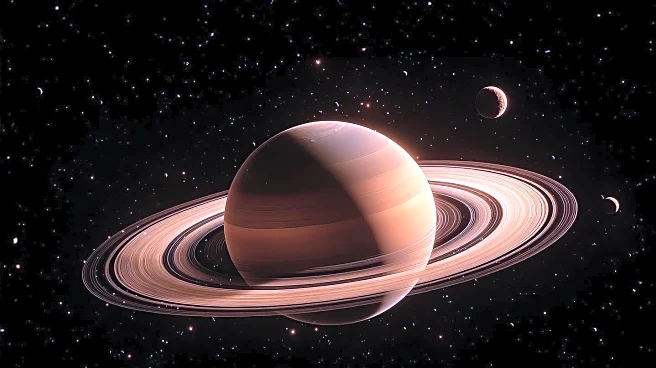What is the story about?
What's Happening?
Saturn has reached opposition, making it highly visible throughout the night and providing optimal conditions for observing its rings and moons. At opposition, Saturn is directly opposite the Sun from Earth's perspective, allowing it to be visible from sunset to sunrise. The planet is currently located in the constellation Pisces, near the Circlet asterism, and shines at a magnitude of 0.6. Its rings, tilted at 1.7 degrees, appear almost edge-on. Observers can also view Saturn's moons, including Titan, Rhea, and Dione. This celestial event coincides with Neptune's upcoming opposition, which will occur on September 23.
Why It's Important?
Saturn's opposition presents a significant opportunity for astronomers and enthusiasts to study the planet's features, including its iconic rings and numerous moons. This event enhances public interest in astronomy and can serve as an educational moment for schools and science centers. The visibility of Saturn and its moons can inspire interest in space exploration and the study of our solar system. Additionally, such events can boost local economies through increased tourism to observatories and dark sky parks.
What's Next?
Following Saturn's opposition, Neptune will reach its own opposition on September 23, providing another opportunity for sky watchers to observe a distant planet. Astronomy clubs and observatories may host viewing events to engage the public and provide educational resources. As the nights grow longer, more celestial events will become visible, offering continued opportunities for observation and study. The focus may also shift to upcoming meteor showers and other planetary oppositions.
AI Generated Content
Do you find this article useful?














